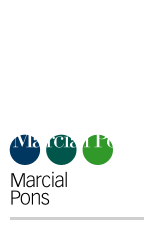Digital libraries and the challenges of digital humanities
- ISBN: 9781843341345
- Editorial: Chandos Publishing
- Fecha de la edición: 2005
- Lugar de la edición: Oxford. Reino Unido
- Encuadernación: Rústica
- Medidas: 24 cm
- Nº Pág.: 120
- Idiomas: Inglés

One of the major challenges facing librarians and curators of digital repositories are the innovative 'born digital' documents created by scholars in the humanities. These documents range from the parsed corpora created by linguists to traditional reference information presented in electronic databases, to rich, multi-media hypertexts combining audio, still and moving video and text, and many other sorts of material. Too often, librarians think of electronic resources solely as providing access to subscription databases. This book encourages librarians to think holistically of the life cycle of electronic resources from new items being created at their institution, to end-user access, to long-term preservation of digital resources. The key features include: focuses on role of a digital library in the complete life cycle (creation, access, long term preservation) of digital objects created by scholars in the humanities; covers recent developments in humanities computing and their implications for digital libraries; and presents accessible technical information about fields such as information retrieval and computational linguistics for a non-technical audience. Dr Jeffrey A. Rydberg-Cox is based at the University of Missouri, Kansas City. The contents include: Introduction - overview of humanities computing and digital libraries; the relationship of the two fields; shared concerns of humanities computing and generations of librarians; the challenges of humanities computing to digital library practitioners; and illustration of practices and challenges using history of Galileo's Siderius Nuncius. The contents also include: providing access to scholarship - text transcription methods (HTML, SGML, and XML) and document formats (TEI, DocBook, etc), challenges to encoding (ASCII and Unicode standards, characters not represented in Unicode, embedded figures and non-standard, typography), and methods that combine page images with facilities for full text searching; helping r






